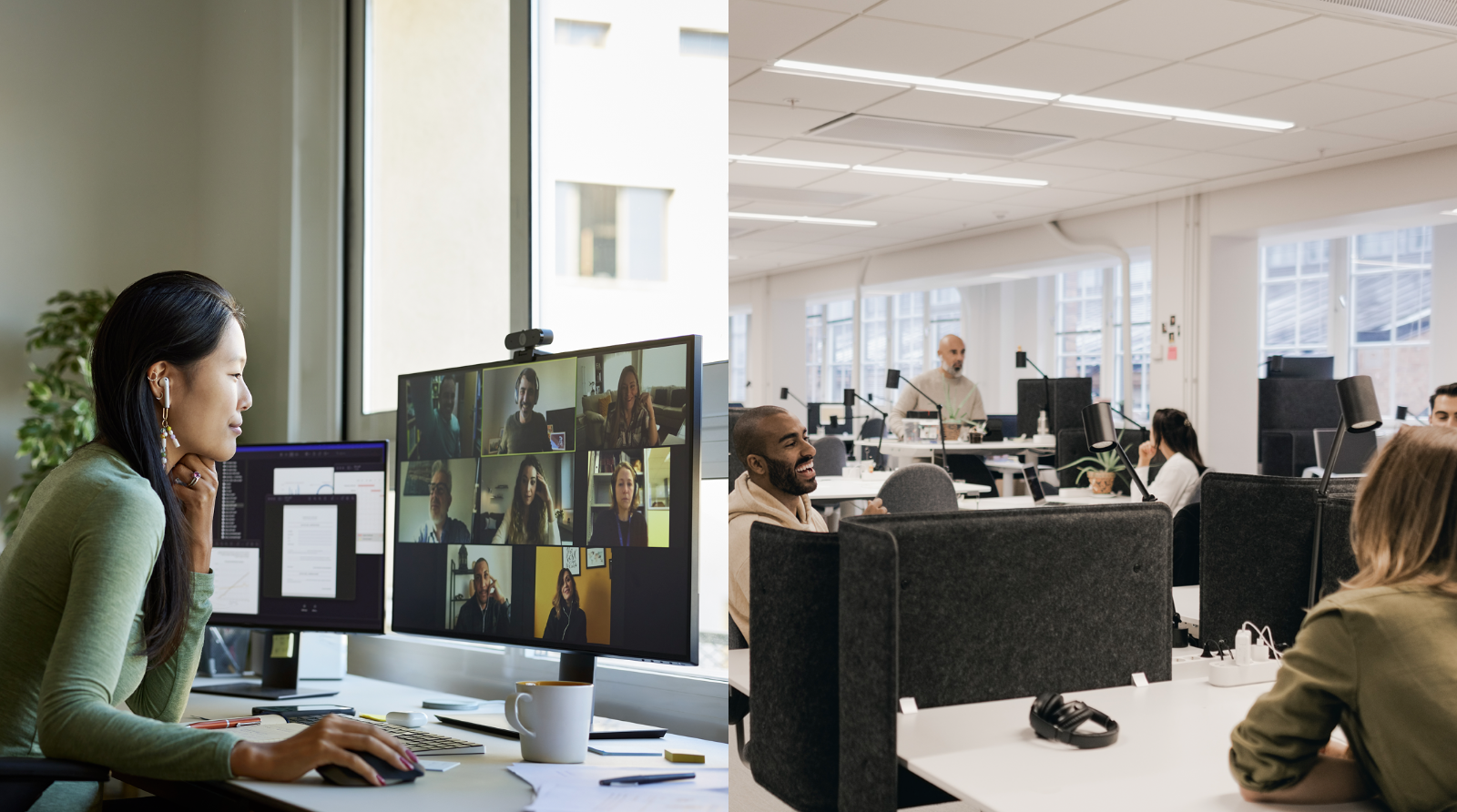Return to Office 2023
Employees want to continue to work from home while many companies are mandating a full return to the office in 2023. Is there a balance?

During the holiday break, my husband and I attended neighborhood gatherings that, by no coincidence, included several friends who work in the pharmaceutical and biotechnology industries. We live ten miles north of Boston and Cambridge, the largest pharmaceutical hub in the US.
Working from home was often the topic of conversation, with some citing challenges but still preferring to work from home most, if not every day.
When I inquired about the hybrid meeting experience in the office, one friend who works at a large pharma company quickly responded that it was a disaster. He said that it was a ghost town, it took too long to launch a meeting in the conference room successfully, and it was easier for everyone to sit at their desk, whether in the office or at home. The consensus was that unless someone needed to go into a lab, most worked from home every day. Those same people said if they were forced to work in the office, they would quit and move to another company.
Shifting Tides and Rumblings About a Return to the Office
According to Layoffs.fyi, which tracks daily layoffs in the tech sector, nearly 150,000 tech jobs were lost in 2022 and another 37,500 by January 19, 2023. On January 18, 2023, Microsoft announced the company would shed 10,000 jobs adding to the recent wave of tech layoffs. On January 20, Google's parent Alphabet Inc cut about 12,000 jobs. Amazon and Salesforce have announced plans to lay off staff in the coming months.
The financial downturn pressures companies to no longer let office space go unused. Real or not, the recent news about layoffs has some chief executives questioning whether productivity is as high when staff is working from home. The tide is beginning to turn from an employee market to an employer market. 2023 is being hailed as the year to Return to the office.
Return to a Better Office
While many talk about a return to normal, few hope that means the old office.
The latest Workplace Survey from the Gensler Research Institute released in December 2022 details how employees spend their time as they return to the office, how the office can more successfully support them, and the strategic design interventions that will have the biggest impact on the workplace experience. Among key findings include:
A daily selection of features, industry news, and analysis for tech managers. Sign up below.
The primary reason that workers come to the office has shifted since the height of the pandemic, and as employees have begun to spend more time working from the office. Employees now prioritize the desire to focus on their work in the office above connecting and collaborating.
>> “To focus on my work” is currently the most important reason employees see for coming to the office. Additional top-ranked reasons center on intentional-based activities such as access to technology, scheduled meetings, and access to specific spaces, materials, and resources.
>> The workplace is increasingly effective in supporting activities that require working with others in-person but working alone and working with others virtually continues to decline in effectiveness, a trend already underway pre-pandemic.
>> Spaces designed to support a) working independently and b) virtual collaboration offer a particular opportunity for positive impact on worker effectiveness and experience. Employees rate both focused work and virtual collaboration as critical to their job performance; on average, 34% of the work week is spent working individually, and 56% of meetings in the office are hybrid requiring the spaces and technology to meet the new performance demands.
>> Support for individual work is particularly critical for younger and non-managerial workers – time spent working with others virtually, learning and socializing increase with seniority of roles.
Hybrid is Not Going Away—Completely
As much as chief executives would like a total return to the office, that ship has sailed. While the number of days required to go into an office might increase, many managers worry that mandates will cause the most valued employees to leave the company.
In April 2022, McKinsey’s American Opportunity Survey revealed, “when people have the chance to work flexibly, 87 percent of them take it.
According to CoStar Group, a provider of online real estate marketplaces, information, and analytics, “A new formula for space is emerging as companies shrink their total square footage, swap private desks for collaboration areas and incorporate perks aimed at enticing employees back to physical spaces.”
If the new normal workplace is to survive and attract vital talent, company executives must provide better in-office environments that nurture individuals and enhance the collaborative experience.
There’s no going back without going backward.

Cindy Davis is the brand and content director of AV Technology (AVT). She was a critical member of the AVT editorial team when the title won the “Best Media Brand” laurel in the 2018 SIIA Jesse H. Neal Awards. Davis moderates several monthly AV/IT roundtables and enjoys facilitating and engaging in deeper conversations about the complex topics shaping the ever-evolving AV/IT industry. She explores the ethos of collaboration, hybrid workplaces, experiential spaces, and artificial intelligence to share with readers. Previously, she developed the TechDecisions brand of content sites for EH Publishing, named one of the “10 Great Business Media Websites” by B2B Media Business magazine. For more than 25 years, Davis has developed and delivered multiplatform content for AV/IT B2B and consumer electronics B2C publications, associations, and companies. A lifelong New Englander, Davis makes time for coastal hikes with her husband, Gary, and their Vizsla rescue, Dixie, sailing on one of Gloucester’s great schooners and sampling local IPAs. Connect with her on LinkedIn.
